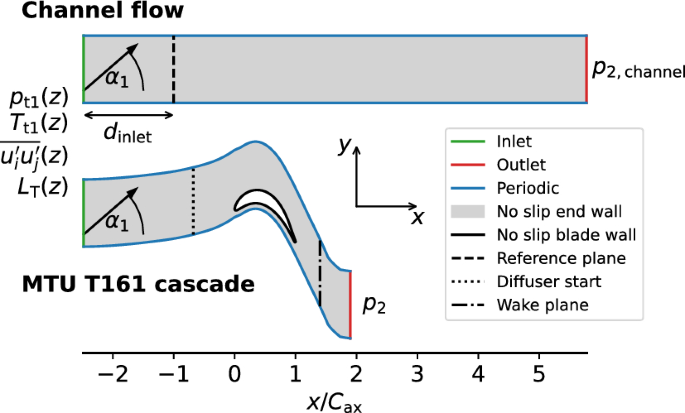We present results of implicit large eddy simulation (LES) and different Reynolds-averaged Navier–Stokes (RANS) models of the MTU 161 low pressure turbine at an exit Reynolds number of \(90\,000\) and exit Mach number of 0.6. The LES results are based on a high-order discontinuous Galerkin method and the RANS is computed using a classical finite-volume approach. The paper discusses the steps taken to create realistic inflow boundary conditions in terms of end wall boundary layer thickness and freestream turbulence intensity. This is achieved by tailoring the input distribution of total pressure and temperature, Reynolds stresses and turbulence length scale to a Fourier series based synthetic turbulence generator. With this procedure, excellent agreement with the experiment can be achieved in terms of blade loading at midspan and wake total pressure losses at midspan and over the channel height. Based on the validated setup, we focus on the discussion of secondary flow structures emerging due to the interaction of the incoming boundary layer and the turbine blade and compare the LES to two commonly used RANS models. Since we are able to create consistent setups for both LES and RANS, all discrepancies can be directly attributed to physical modelling problems. We show that both a linear eddy viscosity model and a differential Reynolds stress model coupled with a state-of-the-art correlation-based transition model fail, in this case, to predict the separation induced transition process around midspan. Moreover, their prediction of secondary flow losses leaves room for improvement as shown by a detailed discussion of turbulence kinetic energy and anisotropy fields.



